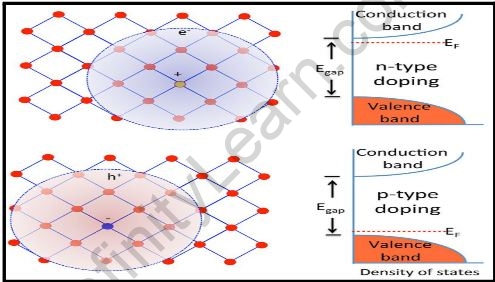
Courses

By Shailendra Singh
|
Updated on 26 Nov 2024, 14:54 IST
A semiconductor is a silicon-based material that conducts electricity better than an insulator like glass but not as well as a pure conductor like copper or aluminum. The introduction of impurities, known as doping, can change their conductivity and other properties to match the unique needs of the electrical components in which they live.
emiconductor devices can exhibit various valuable characteristics, including changeable resistance, the ability to pass current more rapidly in one direction than another, and the ability to react to light and heat. Their primary functions are signal amplification, switching, and power conversion.
They’re used in nearly every industry, and the companies who make and examine them are seen to be strong indicators of the general economy’s health. Semiconductors arrive in a range of sizes.
Semiconductors are divided into four major product categories:
Memory chips are transitory data storage devices that transport information to and from the brains of computer machines. The memory business continues to consolidate, reducing memory prices so low that only a few behemoths such as Toshiba, Samsung, and NEC can finance to stay in the game.
These are centralized processing entities that house the core logic that allows tasks to be completed. With the exception of Advanced Micro Devices, Intel’s dominance in the microprocessor segment has forced practically every other competitor out of the mass market and into lesser niches or different segments entirely.
Commodity Integrated Circuit (CIC) is a type of integrated circuit in which these chips, sometimes known as “regular chips,” are made in large batches for normal processing. This area, which is ruled by very large Asian chip manufacturers, has razor-thin profit margins that can only be competed for by the largest semiconductor companies.
Complex SOC “System on a Chip” is the fabrication of an integrated circuit chip that contains the capacity of an entire system. The market is driven by rising demand for consumer items with additional features at lower prices.

With the markets for memory, microprocessors, and commodity integrated circuits all but closed, the SOC segment is perhaps the only one left with adequate room for a diverse set of enterprises.
An intrinsic semiconductor material such as silicon (Si) contains 14 electrons in a 2,8,4 configuration, while Germanium (Ge) has 32 electrons in a 2,8,18,4 configuration. To be stable, each atom needs 8 electrons in its valence shell. As a result, intrinsic semiconductor atoms form covalent connections by sharing electrons with a neighboring atom to attain an atomic structural balance of 8 electrons.
The conductivity of a pure semiconductor is low. Extrinsic semiconductors, on the other hand, have a substantially higher conductivity than intrinsic semiconductors, even at room temperature. As a result, n-type semiconductors can be used at room temperature. Again, free electrons are the majority carriers in this form of semiconductor, allowing the material to behave like a typical conductor at a fixed temperature.
Trivalent impurities like boron or gallium are widely employed as doping impurities in silicon. Then boron or gallium doped silicon is a wonderful example of a p-type semiconductor. Using the same notion of boron and silicon, whether silicon is doped with gallium or indium, the process can be illustrated.

The audit materials from Infinity Learn grant students to get to resources online at their unwinding and from the convenience of their own homes. It is made out of point-prepared experts and is therefore 100 percent exact and dependable for tests like NEET. The survey material from Infinity Learn is open for download in a pdf plan, which students can store for future reference or view in an electronic manner. The audit materials help backups in quickly settling their inquiries.

The difference in charge carrier density amongst conductors and semiconductors causes the difference in resistivity. Because the quantity of charge carriers grows rapidly as temperature rises, the resistance of semiconductors lowers, making the fractional change, or temperature coefficient, negative.
At zero Kelvin, the conduction band in semiconductors is empty, and the valence band is totally filled. At this temperature, no electron from the valence band can pass into the conduction band. However, due to minor prohibited transitions, some electrons in the valence band leap across to the conduction band at ambient temperature.
Semiconductors' physical and chemical qualities enable them to create modern marvels such as microchips, transistors, LEDs, and solar cells.